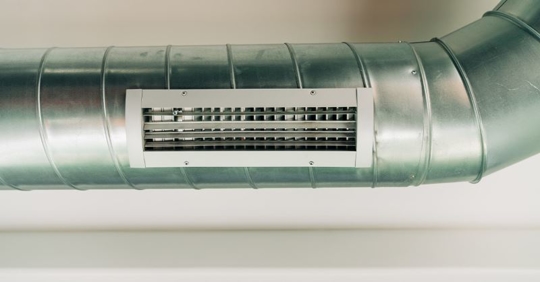Air Balancing: HVAC Services to Save Money
An HVAC air balancing procedure offers homeowners and facility managers alike a helpful tool for improving energy efficiency. This data-driven process evaluates airflow in every room of your property and identifies ways to improve circulation. Learn more about the HVAC air balance test and how Daniel’s can provide services to lower your energy bill.
What is Air Balancing in HVAC?
Air balancing, also known as air duct balancing, is the process of measuring airflow from the source (heating or cooling system) to various parts of a property.
Here’s how HVAC technicians perform the specialized procedure:
- Place hoods on the air vents or registers in every room to measure the volume of air coming out of the duct system.
- Use a manometer to measure air pressure at the supply and return sides of the HVAC system.
- Detect and measure changes in temperature between the HVAC system and the air vent; a temperature loss or gain often signals inadequate ductwork, usually resulting from poor seals or loose joints.
Making the Fix – Air Balance Testing Results
The results of an HVAC air balance test typically fall into one of three categories:
- Easy Fix – The simplest improvements involve adjusting your home’s fan speed to move air more quickly through ductwork. An increase in the airflow rate plays a role in minimizing temperature changes between the HVAC system and air vents. Adjusting your home’s dampers or adding additional dampers can also be a relatively straightforward but effective way to improve air balance.
- Sure Fix – In some cases, loose or ill-fitting ductwork is the cause of air imbalance. Insulating or sealing ductwork may resolve these issues, but damaged ductwork may require replacement. Your HVAC technician can help you identify and replace specific sections if necessary.
- Heavy Lift – Poorly designed HVAC systems may need to be replaced. Especially in older homes, ductwork too large in diameter may require retrofitting to reduce the effects of poor airflow.
DIY Air Balancing – Is It Worth It?
Thinking about air balancing the system yourself? Home and business owners dealing with subtle temperature imbalances may be able to improve circulation by making small changes to their air vent damper blades. It’s okay to open or restrict airflow from vents, but don’t close your vents completely, which can cause other HVAC problems.
Here are the steps for DIY air balancing:
- When temperatures are warm, open all registers on upper floors completely.
- On the ground floor, partially close all vents.
- If you have a basement, partially close those vents too. Closing vents on lower levels helps cool air circulate upstairs more efficiently.
- When temperatures are cold, reverse the process: partially close all vents upstairs and leave the ground floor and basement vents wide open. This will help retain warm air on the lower levels of your property.
The more effective this DIY air balancing troubleshooting is, the more likely your property is an excellent candidate for professional air balancing services.
What Causes Poor Air Balance?
In most cases, poor air balance is the result of faulty, misaligned, or poorly sealed ductwork. Even small cracks in ductwork and duct joints can reduce the amount of air that reaches different parts of your property.
Other common ductwork issues include:
- Poor insulation or lack of insulation
- Improperly sized ductwork
- Dirty or clogged ductwork that requires professional cleaning
Air Balancing Company Near Me
Battle the Texas heat with effective, professional HVAC services. Daniel’s is the most experienced air balancing company in Austin. We’re ready to go to work for you. Learn more about our professional plumbing, drain cleaning, heating, and cooling services. Book online or call us at 512-490-6700 today.

